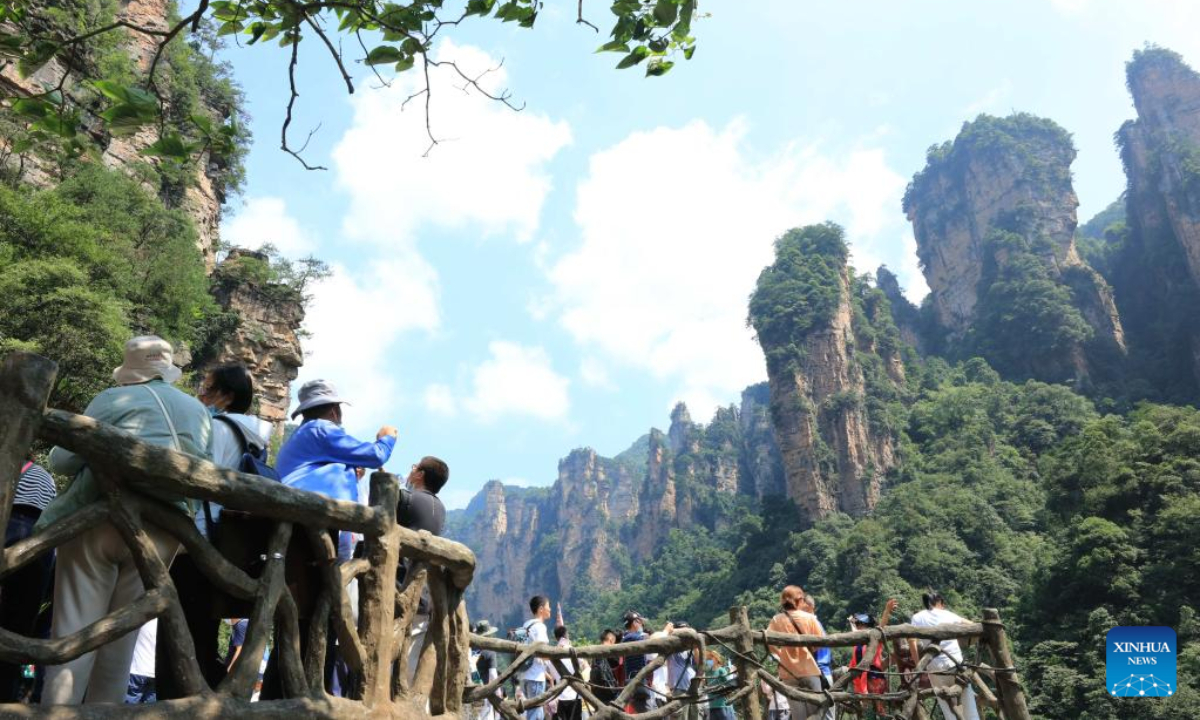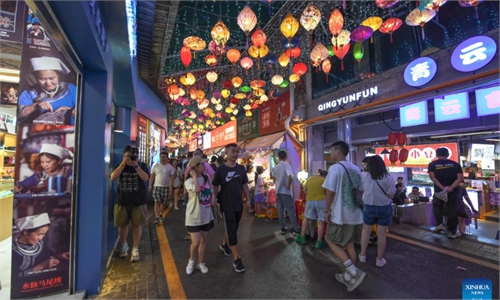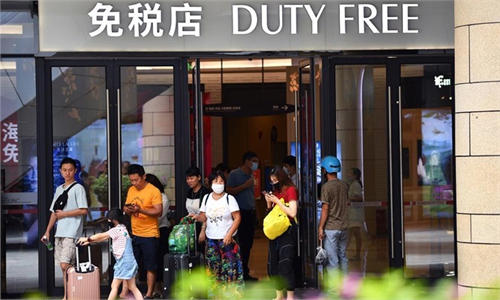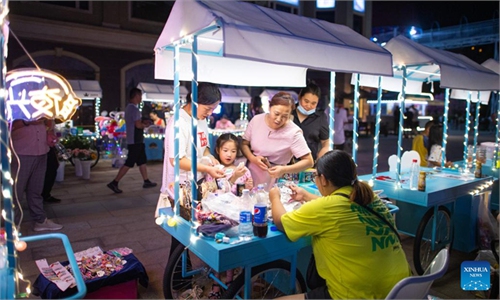China's consumer spending sees sharp rebounding, with retail sales expected to grow 3-6% in H2

Tourists visit the Wulingyuan scenic area in Zhangjiajie, central China's Hunan Province, July 8, 2022. As the summer vacation approaches, Zhangjiajie, a popular tourist destination in Hunan Province, has taken a series of measures to boost the recovery of tourism. Photo:Xinhua
In spite of sporadic COVID-19 flare-ups across China, the country's consumption and tourism have rebounded quickly in summer time, buoyed by scientific anti-coronavirus measures and robust consumption stimulating packages.Railway travel continued to rebound in July, with 224 million passenger trips being made. The daily average number of trips jumped 30.9 percent on a monthly basis, according to data the China State Railway Group Co sent to the Global Times on Tuesday.
The surge in railway trips came as the tourism market experienced an accelerated recovery during the summer time, a travel peak season. In July, the number of tourist-based bookings for summer vacations rose 35 percent month-on-month on China's online travel platform Trip.com, data from the company showed.
The rebound in China's tourism market is in line with market expectations, and it underlines the resilience and potential of China's consumption sector, Cong Yi, an economics professor with the Tianjin University of Finance and Economics, told the Global Times on Tuesday.
As an effective measure to spark domestic demand, a dozen provinces and municipalities including East China's Zhejiang and Jiangxi provinces, North China's Tianjin Municipality and Southwest China's Sichuan Province recently doled out hundreds of millions of yuan worth of consumption vouchers.
Thanks to the government's strong stimulus, all segments in the services sector posted a strong rebound recently. In July, the total box office reached 3.49 billion yuan ($516 million) as of Sunday, an increase of 8.1 percent year-on-year, according to data from Lighthouse, a domestic box office tracker.
The operation of movie theaters in most cities has basically recovered to the same level seen in 2021, media reports said.
In addition, China's passenger vehicle market posted a V-shaped recovery in June, although production and deliveries were affected in the spring due to the severe COVID-19 outbreak in Shanghai. According to data released by the China Association of Automobile Manufacturers, the output of passenger vehicles surged by 43.6 percent year-on-year, while retail sales rose by 41.2 percent year-on-year.
To revitalize domestic consumption, Shanghai launched the Double Five shopping festival on Sunday, which will last until September. As the third such shopping festival in Shanghai this year, groups of market entities including industry associations, chambers and e-commerce platforms are invited to carry out activities to spur business, said a statement on the government's website.
Cong said that the consumption sector will continue to recover in the second half of the year, with retail sales expected to grow 3-6 percent from last year.
"In addition to implementing the policies announced by the central government for stabilizing domestic demand, it's also important to ensure that the job market is steady, which will reassure consumers," he said.
Chinese Premier Li Keqiang stressed at a State Council executive meeting on Friday that consumption should still be the main driver for stabilizing growth, vowing more measures in the second half to further bolster demand, starting with big-ticket consumer goods.
Apart from promoting the real estate sector and car consumption, the meeting also called for the implementation of supportive policies for pandemic-hit industries including catering, retail and tourism, and the extension of extra value-added tax deductions for services.



